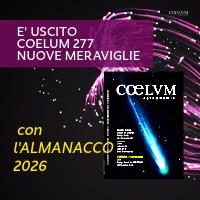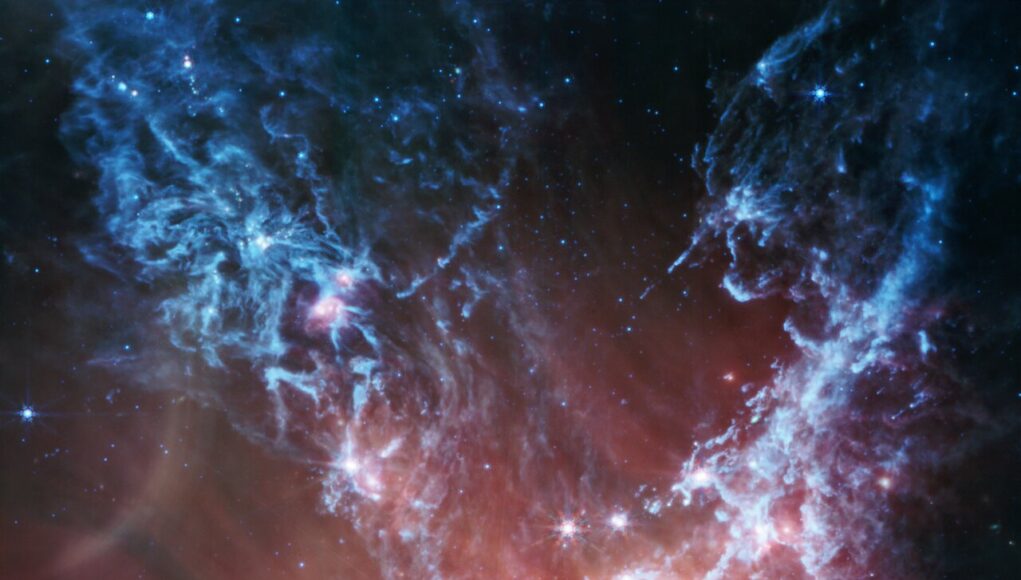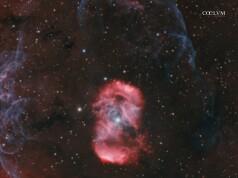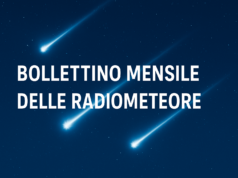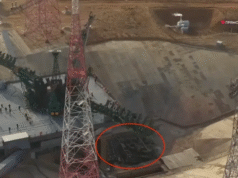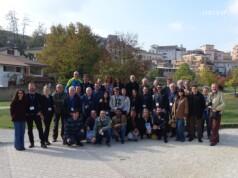Argomento Hot! 🔥🔥
All’interno di una vicina galassia nana conosciuta come la Piccola Nube di Magellano si trova NGC 346, una regione con un’intensa attività di produzione stellare.
Il soggetto è stato già osservato in precedenza da Hubble nello spettro della luce visibile in grado di mostrare le migliaia di stelle, ed era finito anche nella lente dello stesso JWST, ma solo utilizzando la Near Infrared Camera (NIRCam), oltre alle stelle si sono messe in evidenza sia la polvere fredda che quella calda.
Combinando i dati Webb sia nel vicino che nel medio infrarosso, gli astronomi sono in grado di effettuare un censimento più completo delle stelle e delle protostelle all’interno di questa regione dinamica facendo presupporre che questo piccolo satellite della Via Lattea sia di fatto molto più giovane del suo centro di attrazione, la nostra galassia appunto.
Oltre al fascino dello scatto la ricerca ed i risultati che ne deriveranno avranno implicazioni importanti per la nostra comprensione dell’evoluzione delle galassie, processo che presenta ancora moltissimi misteri.
